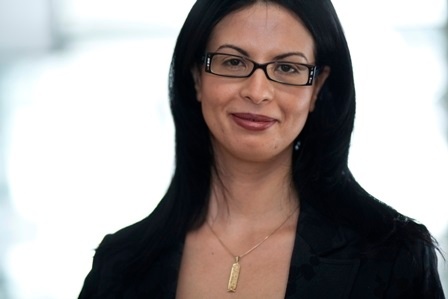1. Ms. Gharbi, you are the chairperson of the iSAQB. What does your work consist of? And what are your goals for the years to come?
In addition to the formal tasks such as the management and legal representation of the association, I ensure that the structures, tasks, mission statement and strategy of the association are defined and adhered to in accordance with the association’s objectives and the statute.
In the coming years, we will continuously strive to establish the role of „software architect“ as a key role for the success of software projects, the worldwide distribution of our curricula, and the establishment of the CPSA brand within the international occupational image of IT.
2. What is of particular importance to the iSAQB when it comes to software architects? Since the role of a software architect can be interpreted differently: Technology planner, change manager, chief developer, project coordinator, communicator, customer consultant, etc.
The software architect has a central role in different facets. They are an advisor to the project managers regarding the distribution of tasks and iteration planning. They are an experienced developer and communicate the know-how and architecture to the other developers. They also play the role of a strategic planner when it comes to technology innovations. For us at the iSAQB, they take on different roles and should have a particularly broad and not always deep knowledge

Mahbouba Gharbi – Chairwoman of iSAQB – International Software Architecture Qualification Board
3. How does one become a successful software architect, and how does the iSAQB certification scheme help to impart core competencies?
Due to the high degree of abstraction, the standard requirement for a career as a software architect is a degree in software technology, engineering or natural sciences. The certification scheme of the iSAQB enables the reinforcement of methodical, technical, and communicative competences according to a uniform program. However, the certification alone does not enable us to successfully perform the job description, but years or even decades of practical experience are required before the role of the software architect can be performed in larger development projects.
4. In your opinion, how has the image of the software developer or architect changed over the last 5 years?
Software architects must see themselves as multitasking team players who can adapt to project requirements and circumstances. Out of the ivory tower, the popular secluded retreat, and into the team and reality, in order to develop approaches that are firstly practical and common, and can secondly be comprehensively grasped by the developers. In doing so, architects must take responsibility and play the key role of communicator and mediator within the team and between the stakeholders. The technological expertise must of course be there, but social skills are also increasingly important!
5. Which trend in software architecture do you currently find most exciting?
Digitization, as it confronts companies with the challenges and risks of their legacy systems. Especially now, during the Corona crisis, many companies have no doubt realized that they are actually lagging behind, and need to prepare even better for the digital reorganization. Requirements are being completely redefined, resulting in paradigm shifts for software architectures. A trade-off that will accompany us in the coming years.










